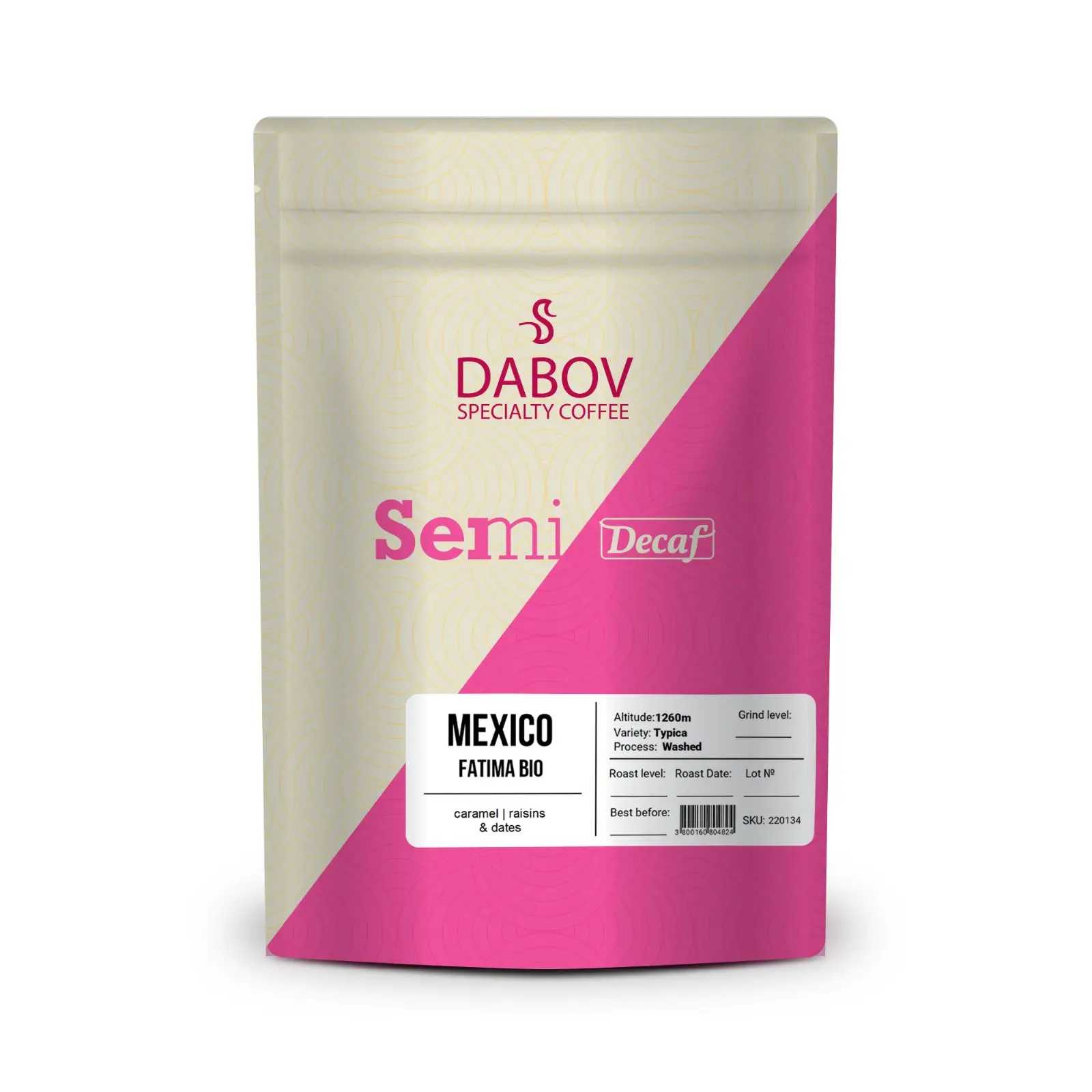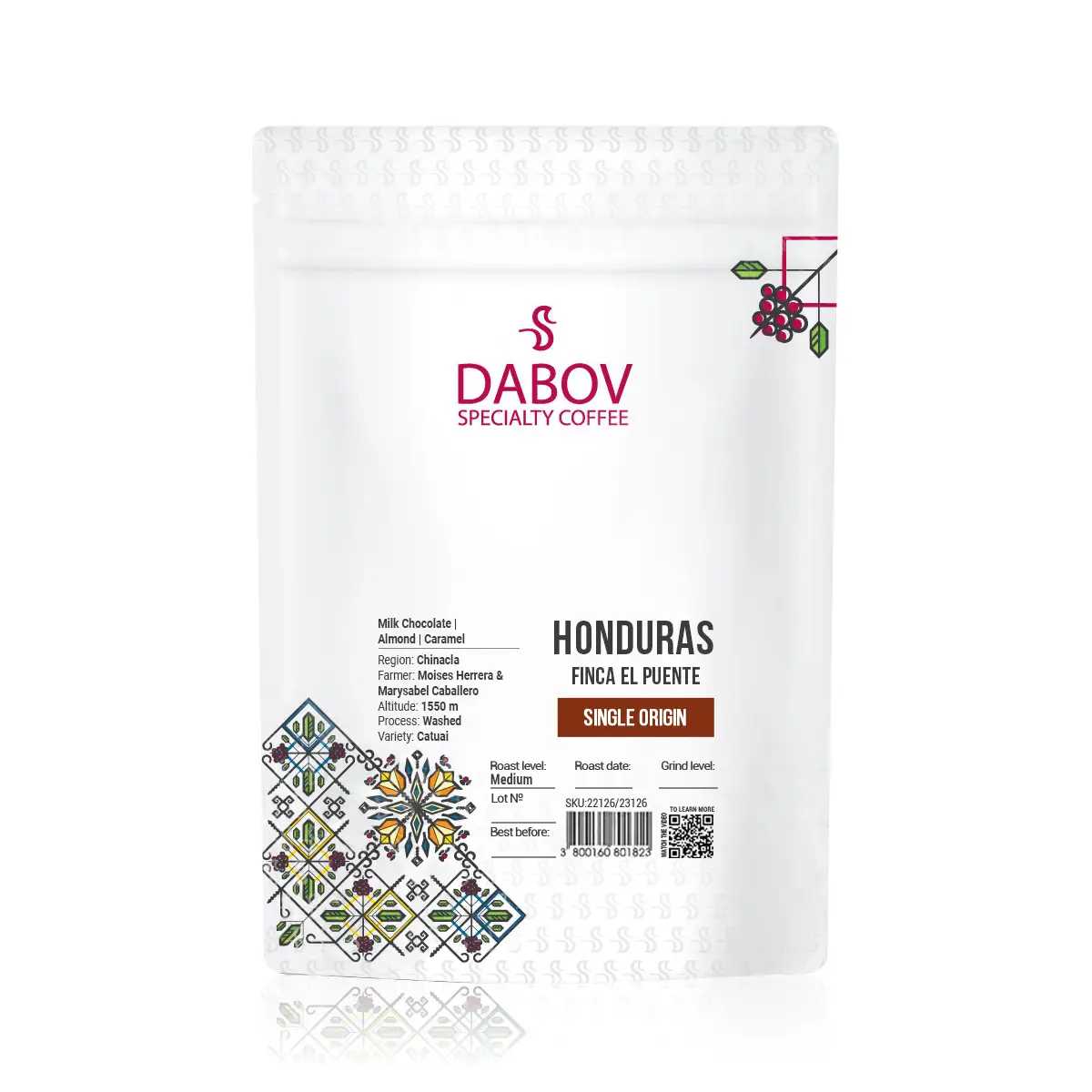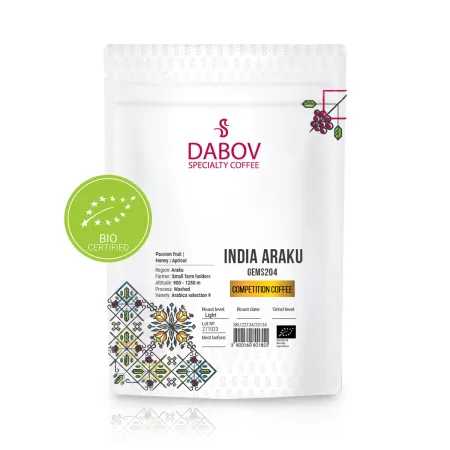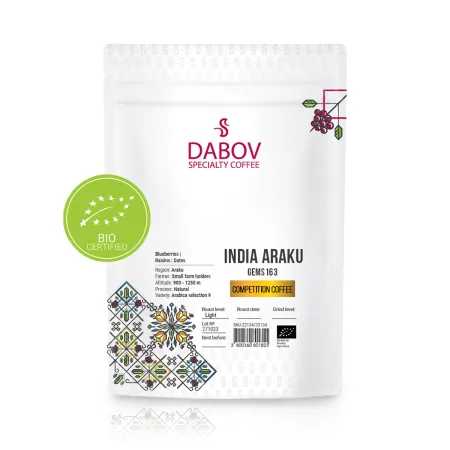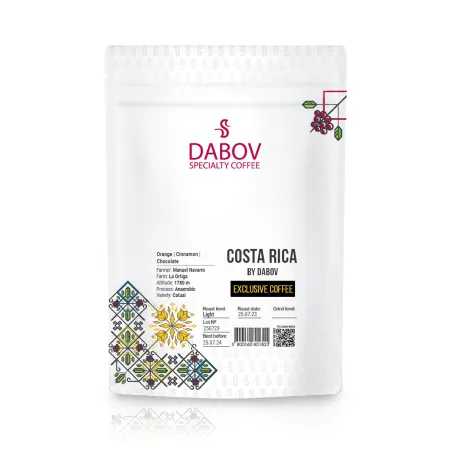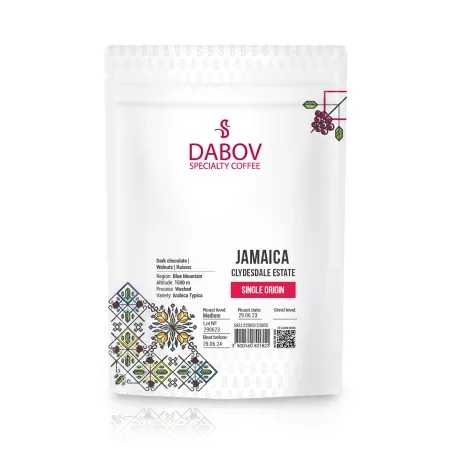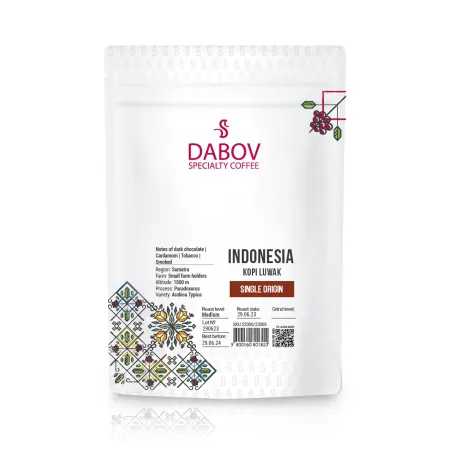Building a Sustainable Coffee Farm Steps and Strategies
Discover the transformative journey of building a sustainable coffee farm! This guide dives into essential steps and strategies to foster environmental stewardship, enhance coffee quality, and uplift local communities. From understanding sustainable practices to exploring innovative technologies, learn how to create a thriving eco-friendly coffee farm. You'll find expert insights on site selection, soil preparation, pest management, and effective marketing tactics. Whether you're a seasoned producer or just starting out, this comprehensive article will equip you with the necessary tools and knowledge for sustainable agriculture in coffee farming. Join the movement towards a greener coffee industry and make a lasting impact!
Introduction
In an era where environmental consciousness and ethical consumption are at the forefront of consumer minds, sustainable coffee farming has emerged as a crucial paradigm shift in the coffee industry. This comprehensive guide delves into the intricate world of building and maintaining a sustainable coffee farm, offering invaluable insights for both aspiring and established coffee farmers. The purpose of this article is to illuminate the path towards creating a coffee farm that not only produces high-quality beans but also nurtures the environment, supports local communities, and ensures long-term economic viability.
Sustainable agriculture coffee represents a holistic approach to coffee production that goes beyond mere crop yield. It encompasses a set of practices that prioritize environmental stewardship, social responsibility, and economic fairness. By adopting sustainable methods, coffee farmers can mitigate the negative impacts of traditional farming practices, such as deforestation, soil degradation, and water pollution. Moreover, sustainable coffee farming plays a pivotal role in preserving biodiversity, enhancing ecosystem services, and building resilience against climate change – factors that are increasingly critical in the face of global environmental challenges.
As we embark on this exploration of sustainable coffee farming, we will uncover the multifaceted benefits it offers to various stakeholders. From improved soil health and water conservation to enhanced farmer livelihoods and superior coffee quality, the ripple effects of sustainable practices are far-reaching. This article will guide you through the essential steps and strategies required to establish and maintain a thriving, sustainable coffee farm, equipping you with the knowledge to contribute positively to the coffee industry's future.
Section 1: Understanding Sustainable Coffee Farming
1.1 Definition of Sustainable Coffee Farming
Sustainable coffee farming is a comprehensive approach to coffee production that harmonizes environmental conservation, social equity, and economic viability. At its core, it involves cultivating coffee in a manner that maintains or enhances the natural ecosystem while providing a dignified livelihood for farmers and their communities. This holistic method encompasses a wide array of practices designed to minimize negative environmental impacts while maximizing social and economic benefits.
The concept of sustainable coffee farming extends far beyond organic cultivation. While organic practices are often a component of sustainable farming, the latter encompasses a broader spectrum of considerations. Sustainable coffee farming involves careful management of natural resources, such as soil and water, to ensure their long-term viability. It also includes the implementation of agroforestry systems, where coffee plants are grown alongside native trees and other crops, mimicking natural forest ecosystems.
Ecological efficiency is a cornerstone of sustainable coffee farming. This involves optimizing the use of natural resources while minimizing waste and pollution. For instance, sustainable farms often employ water-saving irrigation techniques, utilize natural pest control methods, and implement composting systems to recycle organic matter. These practices not only reduce the farm's environmental footprint but also contribute to the overall health of the ecosystem.
Economic viability is equally crucial in sustainable coffee farming. The goal is to create a farming system that is profitable and resilient in the face of market fluctuations and climate change. This often involves diversifying income streams through intercropping, value addition, and direct marketing strategies. By ensuring economic stability, sustainable coffee farms can invest in environmental conservation and social welfare programs, creating a positive feedback loop of sustainability.
1.2 Importance of Sustainability in Coffee Production
The significance of sustainability in coffee production cannot be overstated, given the coffee industry's substantial global footprint and its vulnerability to climate change. Sustainable practices play a vital role in preserving biodiversity, enhancing soil health, and building climate resilience – factors that are critical not only for the longevity of coffee farming but also for the broader environmental and social contexts in which these farms operate.
Biodiversity conservation is one of the most profound benefits of sustainable coffee farming. Traditional sun-grown coffee plantations often involve clearing large swaths of forest, leading to habitat loss and reduced biodiversity. In contrast, sustainable coffee farms, particularly those employing shade-grown methods, can serve as havens for diverse flora and fauna. These farms can act as corridors for wildlife, supporting migratory birds and providing habitats for numerous species. The preservation of biodiversity not only benefits the local ecosystem but also contributes to the farm's resilience by fostering natural pest control and pollination services.
Soil health is another critical aspect significantly improved by sustainable coffee farming practices. Conventional coffee farming often leads to soil degradation through erosion, compaction, and loss of organic matter. Sustainable practices, such as cover cropping, mulching, and minimal tillage, help to build and maintain healthy soils. These methods increase soil organic matter, improve water retention capacity, and enhance nutrient cycling. Healthy soils not only support better coffee yields but also sequester carbon, contributing to climate change mitigation.
Climate resilience is perhaps one of the most pressing reasons for adopting sustainable coffee farming practices. Coffee plants are notoriously sensitive to temperature and rainfall patterns, making them particularly vulnerable to climate change. Sustainable farming methods, such as agroforestry and water conservation, help create microclimates that buffer coffee plants against extreme weather events. Moreover, the diversification of crops and income sources typical in sustainable systems provides economic resilience in the face of climate-induced crop failures.
The impact of sustainable practices on coffee quality is another significant benefit. Shade-grown coffee, a common feature of sustainable farms, often produces beans with more complex flavor profiles due to slower maturation. The focus on soil health and natural pest management also contributes to the production of healthier, more flavorful beans. This quality improvement can translate into higher market prices, further supporting the economic sustainability of the farm.
In conclusion, understanding sustainable coffee farming is crucial for anyone looking to enter or improve their position in the coffee industry. It represents a forward-thinking approach that not only ensures the long-term viability of coffee production but also contributes positively to global environmental and social challenges. As we delve deeper into the practical aspects of building and managing a sustainable coffee farm, keep in mind that each decision and practice is part of a larger system aimed at creating a more sustainable and equitable coffee industry.
Section 2: Steps to Building a Coffee Farm
2.1 Planning Your Coffee Farm
The foundation of a successful sustainable coffee farm lies in meticulous planning and thoughtful site selection. This crucial phase sets the stage for all future operations and can significantly impact the farm's long-term sustainability and profitability. When choosing a location for your coffee farm, several key factors must be carefully considered to ensure optimal growing conditions and sustainable practices.
Climate is perhaps the most critical factor in site selection for coffee farming. Coffee plants thrive in specific temperature ranges and require particular patterns of rainfall and humidity. For Arabica coffee, which accounts for about 60-70% of global coffee production, the ideal temperature range is between 60°F and 70°F (15°C to 21°C). Temperatures consistently above 73°F (23°C) can lead to accelerated ripening of coffee cherries, which often results in lower quality beans. On the other hand, frost can severely damage coffee plants, so areas prone to freezing temperatures should be avoided.
Elevation plays a crucial role in coffee cultivation, particularly for high-quality Arabica varieties. Generally, higher elevations are associated with better quality coffee due to slower bean maturation, which allows for more complex flavor development. The optimal elevation range for Arabica coffee is typically between 3,000 and 6,000 feet (900 to 1,800 meters) above sea level. However, this can vary depending on the specific variety and local climate conditions. It's important to note that while higher elevations can produce superior coffee, they also present challenges such as increased risk of frost and more difficult harvesting conditions.
Soil type is another critical factor that significantly influences coffee plant health and bean quality. Coffee plants prefer well-draining, slightly acidic soils with a pH between 6.0 and 6.5. The ideal soil for coffee cultivation is deep, fertile, and rich in organic matter. Volcanic soils, which are common in many coffee-growing regions, are particularly well-suited for coffee due to their excellent drainage properties and mineral content. However, coffee can be grown in a variety of soil types with proper management practices.
When planning your coffee farm, it's essential to consider the farm's layout and infrastructure needs. This includes planning for access roads, water sources, processing facilities, and storage areas. The layout should maximize efficiency while minimizing environmental impact. For instance, planning buffer zones along water bodies can help prevent erosion and protect water quality. Similarly, designating areas for composting and natural pest management can support the farm's overall sustainability.
Water availability is a crucial consideration in coffee farm planning. Coffee plants require consistent moisture, especially during the flowering and fruit development stages. While coffee is relatively drought-tolerant compared to many crops, prolonged dry periods can significantly impact yield and quality. Therefore, assessing the reliability of rainfall patterns and the availability of irrigation sources is essential. Sustainable water management practices, such as rainwater harvesting and efficient irrigation systems, should be incorporated into the farm plan from the outset.
The surrounding ecosystem and biodiversity should also be carefully evaluated when selecting a site for your coffee farm. Areas with existing forest cover or diverse plant species can provide natural shade and support beneficial insects and wildlife. These factors contribute to the farm's overall sustainability and can enhance coffee quality. Moreover, preserving existing ecosystems aligns with sustainable farming principles and can potentially qualify the farm for various sustainability certifications.
Lastly, social and economic factors must be considered in the planning phase. This includes assessing the availability of skilled labor, proximity to processing facilities and markets, and the potential for community engagement. A sustainable coffee farm should not only be environmentally sound but also socially responsible and economically viable.
In conclusion, planning a sustainable coffee farm requires a holistic approach that considers environmental, social, and economic factors. By carefully selecting the right location and meticulously planning the farm's layout and operations, you lay the groundwork for a successful and sustainable coffee farming venture. This initial investment of time and resources in thorough planning will pay dividends in the form of healthier plants, higher quality coffee, and a more resilient farming system.
2.2 Soil Preparation and Fertilization
Soil preparation and fertilization are fundamental aspects of establishing a sustainable coffee farm. These practices not only set the stage for healthy plant growth but also contribute to the long-term sustainability of the farm ecosystem. Proper soil management is crucial for maintaining soil fertility, improving water retention, and promoting beneficial microbial activity – all of which are essential for producing high-quality coffee sustainably.
The first step in soil preparation is conducting a comprehensive soil analysis. This analysis should assess soil texture, structure, pH, organic matter content, and nutrient levels. Understanding these factors allows farmers to tailor their soil preparation and fertilization strategies to the specific needs of their land. For instance, if the soil is too acidic, which is common in many coffee-growing regions, amendments like lime may be necessary to raise the pH to the optimal range for coffee (6.0-6.5).
Once the soil characteristics are understood, the next step is to improve soil structure and fertility. In sustainable coffee farming, this is primarily achieved through organic methods. One of the most effective techniques is the addition of organic matter through composting. Composting not only provides essential nutrients but also improves soil structure, enhances water retention, and promotes beneficial microbial activity.
To create high-quality compost for coffee farms, a mixture of nitrogen-rich "green" materials (such as coffee pulp, food scraps, and fresh plant matter) and carbon-rich "brown" materials (like dried leaves, straw, and wood chips) is used. The composting process should be carefully managed to ensure proper decomposition and to avoid the spread of diseases. Many sustainable coffee farms establish their own composting systems, which not only provides a steady supply of organic fertilizer but also helps manage farm waste efficiently.
Cover cropping is another valuable technique in sustainable soil preparation. Planting cover crops, such as legumes, between coffee rows or during fallow periods can significantly improve soil health. Leguminous cover crops, in particular, are beneficial as they fix nitrogen in the soil, reducing the need for external nitrogen inputs. Cover crops also help prevent soil erosion, suppress weeds, and add organic matter to the soil when they are eventually cut and left as mulch.
Mulching is a crucial practice in sustainable coffee farming. Applying a layer of organic mulch around coffee plants helps retain soil moisture, regulate soil temperature, suppress weed growth, and gradually add nutrients to the soil as the mulch decomposes. Common mulching materials in coffee farms include pruned coffee branches, leaf litter, and composted organic matter.
When it comes to fertilization, sustainable coffee farms prioritize organic fertilizers over synthetic ones. While organic fertilizers may have lower nutrient concentrations compared to synthetic fertilizers, they offer numerous benefits. Organic fertilizers release nutrients slowly, reducing the risk of nutrient leaching and water pollution. They also improve soil structure and promote beneficial microbial activity, contributing to overall soil health.
A popular organic fertilization technique in sustainable coffee farming is the use of "bokashi," a fermented organic matter that acts as a soil amendment and microbial inoculant. Bokashi is made by fermenting organic materials with effective microorganisms, resulting in a nutrient-rich substance that enhances soil fertility and plant health.
Foliar feeding, the practice of applying liquid fertilizers directly to plant leaves, is another technique used in sustainable coffee farming. This method can be particularly effective for addressing specific nutrient deficiencies quickly. Organic foliar sprays can be made from compost tea, seaweed extracts, or other natural ingredients.
It's important to note that soil preparation and fertilization in sustainable coffee farming is an ongoing process, not a one-time event. Regular soil testing, careful observation of plant health, and adaptive management are necessary to maintain optimal soil conditions over time.
Implementing these sustainable soil preparation and fertilization practices not only supports healthy coffee plants but also contributes to the overall sustainability of the farm ecosystem. By building healthy soils, coffee farmers can reduce their dependence on external inputs, improve water management, and enhance the farm's resilience to climate change – all while producing high-quality, sustainable coffee.
2.3 Choosing the Right Coffee Varieties
Selecting the appropriate coffee varieties is a critical decision that can significantly impact the success and sustainability of your coffee farm. The choice of varieties influences not only the quality and flavor profile of your coffee but also the farm's resilience to pests, diseases, and changing climate conditions. In sustainable coffee farming, the goal is to choose varieties that are well-adapted to the local environment, resistant to common threats, and capable of producing high-quality beans.
Arabica (Coffea arabica) and Robusta (Coffea canephora) are the two main species of coffee cultivated worldwide, with Arabica accounting for about 60-70% of global production. Arabica is generally preferred for its superior flavor profile and is the species of choice for specialty coffee. However, it's more susceptible to pests and diseases and less tolerant of high temperatures compared to Robusta. Robusta, on the other hand, is hardier and produces higher yields but is often considered inferior in taste. In sustainable farming, the choice between Arabica and Robusta (or a combination of both) depends on factors such as local climate, elevation, market demand, and the farm's specific sustainability goals.
Within the Arabica species, there are numerous varieties and cultivars, each with its own characteristics. Some popular Arabica varieties include Typica, Bourbon, Caturra, Catuai, and Gesha. Typica and Bourbon are considered "heirloom" varieties, known for their excellent cup quality but also for their susceptibility to diseases like coffee leaf rust. Caturra and Catuai are more compact varieties that allow for higher planting densities, potentially increasing yields. Gesha, while renowned for its exceptional flavor profile, is notoriously difficult to grow and susceptible to diseases.
In recent years, there has been increasing interest in hybrid varieties developed to combine desirable traits such as disease resistance, climate resilience, and cup quality. For example, the Centroamericano hybrid, developed by World Coffee Research, offers high yield potential, excellent cup quality, and resistance to coffee leaf rust. Similarly, the Marsellesa variety, developed in Nicaragua, combines rust resistance with good cup quality.
When selecting varieties for a sustainable coffee farm, several factors should be considered:
- Climate Adaptation: Choose varieties that are well-suited to your local climate conditions, including temperature ranges, rainfall patterns, and elevation. Some varieties perform better at higher elevations, while others are more tolerant of warmer temperatures at lower elevations.
- Disease and Pest Resistance: Consider the prevalent diseases and pests in your region. Varieties with genetic resistance to common threats can significantly reduce the need for chemical interventions, aligning with sustainable farming principles.
- Cup Quality: The flavor profile and overall cup quality are crucial, especially for farms targeting the specialty coffee market. However, this should be balanced with other factors like yield and resilience.
- Yield Potential: While not the sole consideration in sustainable farming, yield is important for economic viability. Some modern varieties and hybrids offer higher yield potential without compromising on quality or resilience.
- Tree Architecture: The growth habit of the coffee tree can affect planting density, ease of harvesting, and overall farm management. Compact varieties might be preferable in certain situations.
- Maturation Time: The time it takes for cherries to ripen can affect harvesting schedules and labor requirements. Some varieties have more uniform ripening, which can be advantageous.
- Adaptability to Agroforestry Systems: For farms implementing shade-grown coffee systems, it's important to choose varieties that perform well under partial shade conditions.
It's often beneficial to plant a diverse range of coffee varieties on a single farm. This diversity can provide several advantages:
- Risk Management: Different varieties may respond differently to various stresses, reducing the risk of total crop failure.
- Extended Harvest Season: Varieties with different maturation times can extend the harvest season, spreading out labor requirements and potentially improving cash flow.
- Flavor Complexity: A mix of varieties can contribute to more complex and interesting flavor profiles in the final product.
Sustainable coffee farming also emphasizes the importance of preserving genetic diversity. Many sustainable farms participate in efforts to conserve heirloom varieties, recognizing their value in terms of unique flavor profiles and genetic resources for future breeding programs.
In conclusion, choosing the right coffee varieties for your sustainable farm involves careful consideration of multiple factors. It requires balancing productivity, quality, and resilience while considering the specific conditions of your farm and your market goals. By making informed choices about coffee varieties, you can set a strong foundation for a sustainable and successful coffee farming operation.
Section 3: Essential Coffee Farm Strategies
3.1 Implementing Agroforestry Practices
Agroforestry is a cornerstone of sustainable coffee farming, offering a multitude of benefits that align perfectly with the principles of environmental stewardship and long-term agricultural viability. This practice involves integrating trees and shrubs into coffee cultivation systems, creating a multi-layered ecosystem that mimics natural forests. The implementation of agroforestry in coffee farms is not just an ecological choice; it's a strategic decision that can enhance biodiversity, improve soil health, and provide additional income streams.
The concept of shade-grown coffee is perhaps the most well-known application of agroforestry in coffee farming. In this system, coffee plants are grown under a canopy of diverse tree species. This approach offers several significant advantages:
- Microclimate Regulation: The tree canopy helps moderate temperature extremes, reducing heat stress on coffee plants during hot periods and providing protection against frost in colder regions. This temperature regulation is becoming increasingly crucial as climate change leads to more frequent weather extremes.
- Soil Conservation: Trees help prevent soil erosion by reducing the impact of heavy rains and wind. Their root systems also improve soil structure and water infiltration, reducing runoff and conserving moisture in the soil.
- Nutrient Cycling: Leaf litter from shade trees contributes to soil organic matter, enhancing soil fertility. Some tree species, particularly legumes, can fix nitrogen, reducing the need for external fertilizer inputs.
- Pest and Disease Management: A diverse agroforestry system can harbor natural predators of coffee pests, contributing to biological pest control. The shade environment can also reduce the incidence of certain diseases by altering humidity levels and sun exposure.
- Biodiversity Enhancement: Shade coffee farms can serve as important habitats for a wide range of plant and animal species, including migratory birds. This biodiversity can contribute to overall ecosystem health and resilience.
- Carbon Sequestration: The incorporation of trees in coffee farms significantly increases the farm's capacity to sequester carbon, contributing to climate change mitigation efforts.
When implementing agroforestry practices in a coffee farm, careful selection of tree species is crucial. Ideal shade trees for coffee agroforestry systems should have the following characteristics:
- Deep root systems that don't compete excessively with coffee plants for water and nutrients
- Canopies that provide filtered light rather than dense shade
- Nitrogen-fixing capabilities (in the case of leguminous trees)
- Potential for additional farm products (fruits, timber, etc.)
Some commonly used tree species in coffee agroforestry systems include:
- Inga species (Ice Cream Bean): These nitrogen-fixing trees are widely used in Latin American coffee farms.
- Erythrina species (Coral Trees): Another nitrogen-fixing option that provides light shade and can be easily pruned.
- Grevillea robusta (Silky Oak): A popular choice in East Africa, providing timber and light shade.
- Various fruit trees: Avocado, citrus, and macadamia can provide additional income streams.
The design of an agroforestry system should consider factors such as tree spacing, pruning regimes, and the specific needs of the coffee varieties being grown. A well-designed system balances shade levels to optimize coffee production while maximizing ecological benefits.
It's important to note that while shade-grown coffee is often associated with lower yields compared to full-sun systems, this is not always the case. With proper management, shade coffee systems can produce comparable yields while offering superior sustainability and often higher quality beans. The slower maturation of coffee cherries in shade conditions can lead to more complex flavor profiles, potentially commanding premium prices in specialty markets.
Agroforestry in coffee farms can also provide opportunities for income diversification. Shade trees can yield products such as fruits, nuts, or timber, providing additional revenue streams that can buffer against coffee price fluctuations. Some farms have successfully integrated beekeeping into their agroforestry systems, producing honey as a valuable by-product.
Implementing agroforestry practices requires careful planning and a long-term perspective. It may take several years for the full benefits of the system to manifest. However, the long-term advantages in terms of sustainability, resilience, and potentially higher-value coffee production make it a cornerstone strategy for sustainable coffee farming.
In conclusion, agroforestry practices represent a holistic approach to coffee cultivation that aligns environmental conservation with productive agriculture. By mimicking natural forest ecosystems, these systems create a more stable and resilient farming environment, contributing to both the ecological and economic sustainability of coffee production. As climate change continues to pose challenges to traditional coffee farming methods, the adoption of agroforestry practices becomes increasingly important for the future of sustainable coffee production.
3.2 Water Management Techniques
Effective water management is a critical component of sustainable coffee farming, playing a vital role in both the quality of coffee production and the overall environmental impact of the farm. As climate change leads to more erratic rainfall patterns and increased water scarcity in many coffee-growing regions, implementing efficient water management techniques has become more crucial than ever. Sustainable coffee farms employ a range of strategies to conserve water, protect water sources, and ensure optimal water use for coffee cultivation.
One of the most important aspects of water management in coffee farming is irrigation. While many coffee farms rely on rainfall, supplemental irrigation can be necessary, especially in regions with distinct dry seasons or during prolonged drought periods. Sustainable farms prioritize efficient irrigation methods that minimize water waste:
- Drip Irrigation: This system delivers water directly to the base of each coffee plant through a network of pipes and emitters. Drip irrigation can reduce water usage by up to 60% compared to traditional flood irrigation methods. It also helps maintain consistent soil moisture levels, which is crucial for coffee plant health and bean development.
- Micro-Sprinklers: These provide a fine spray of water over a small area, offering more efficient water distribution than traditional sprinkler systems. They're particularly useful in areas where drip irrigation might be impractical due to terrain or other factors.
- Precision Irrigation: Advanced farms are beginning to use soil moisture sensors and weather data to precisely time and quantify irrigation, ensuring that water is applied only when and where it's needed.
Rainwater harvesting is another key strategy in sustainable water management for coffee farms. This involves collecting and storing rainwater for use during dry periods. Techniques include:
- Roof Catchment Systems: Installing gutters and storage tanks to collect rainwater from building roofs.
- Contour Trenches and Bunds: Creating earthworks that slow water runoff and increase infiltration into the soil.
- Check Dams: Small dams in drainage channels that slow water flow and promote groundwater recharge.
Effective rainwater harvesting not only provides a valuable water source for irrigation but also helps prevent soil erosion and reduces the farm's dependence on external water sources.
Water conservation in coffee processing is another critical area where sustainable farms focus their efforts. Traditional wet processing of coffee can consume large amounts of water and generate wastewater that, if not properly managed, can pollute local water sources. Sustainable farms implement various techniques to reduce water use in processing:
- Eco-Pulpers: These machines use significantly less water than traditional pulping methods and can even operate without water in some cases.
- Water Recycling Systems: Implementing systems to treat and reuse water from the wet milling process can drastically reduce overall water consumption.
- Dry Processing: Where appropriate, using dry processing methods (natural or honey process) can significantly reduce water usage compared to wet processing.
- Wastewater Treatment: Implementing systems to treat wastewater before it's released back into the environment, often using natural filtration methods like constructed wetlands.
Protecting water sources is another crucial aspect of sustainable water management. This involves:
- Maintaining Riparian Buffers: Preserving or restoring vegetation along waterways to prevent erosion and filter runoff.
- Avoiding Chemical Contamination: Implementing practices to prevent pesticides and fertilizers from entering water sources, such as proper storage and application methods.
- Soil Conservation Practices: Implementing techniques like contour planting and terracing to reduce soil erosion and runoff.
Climate change adaptation is becoming an increasingly important aspect of water management in coffee farming. Sustainable farms are implementing strategies to build resilience against changing rainfall patterns and increased water scarcity:
- Drought-Resistant Varieties: Planting coffee varieties that are more tolerant of water stress.
- Improved Soil Management: Enhancing soil organic matter content to improve water retention capacity.
- Agroforestry Practices: As discussed earlier, integrating trees can help regulate local microclimates and improve water retention in the ecosystem.
- Water Storage Infrastructure: Investing in water storage facilities to capture excess rainfall for use during dry periods.
Monitoring and measuring water use is essential for effective water management. Sustainable farms often implement water auditing systems to track water usage across different farm operations. This data can help identify areas for improvement and track the effectiveness of water conservation measures over time.
Community engagement is another important aspect of sustainable water management, especially in regions where water resources are shared. Sustainable coffee farms often participate in watershed management initiatives, collaborating with local communities and other stakeholders to ensure equitable and sustainable use of water resources.
In conclusion, effective water management is a multifaceted and crucial aspect of sustainable coffee farming. By implementing a combination of efficient irrigation techniques, rainwater harvesting, water conservation in processing, and protective measures for water sources, sustainable coffee farms can significantly reduce their water footprint while ensuring optimal conditions for coffee cultivation. These practices not only contribute to the environmental sustainability of the farm but also enhance its resilience to climate change and water scarcity challenges, ensuring long-term viability in an increasingly water-stressed world.
3.3 Pest Management and Organic Farming Techniques
Pest management is a critical aspect of coffee farming, and in sustainable agriculture, the focus is on implementing strategies that effectively control pests while minimizing environmental impact and preserving ecosystem balance. Organic farming techniques play a crucial role in this approach, emphasizing natural methods of pest control and soil health management. The goal is to create a resilient farming system that can naturally withstand pest pressures without relying heavily on synthetic pesticides.
Integrated Pest Management (IPM) is the cornerstone of sustainable pest control in coffee farming. IPM is a holistic approach that combines various strategies to manage pests effectively while minimizing risks to human health and the environment. Key components of IPM in coffee farming include:
- Monitoring and Identification: Regular scouting of coffee plants to identify pest problems early. This involves training farmers to recognize signs of pest infestation and beneficial insects.
- Prevention: Implementing cultural practices that make the farm less hospitable to pests. This includes proper plant spacing, pruning, and maintaining farm hygiene.
- Biological Control: Encouraging and introducing natural predators of coffee pests. For example, birds and beneficial insects can help control coffee berry borers.
- Mechanical Control: Using physical methods to remove pests, such as manually removing infected cherries or using traps.
- Chemical Control: When necessary, using selective, low-toxicity pesticides as a last resort, and applying them in a targeted manner.
One of the most significant pest challenges in coffee farming is the coffee berry borer (Hypothenemus hampei), a small beetle that burrows into coffee cherries. Sustainable farms employ various organic techniques to manage this pest:
- Traps: Using alcohol-baited traps to capture adult beetles.
- Biological Control: Introducing natural enemies like the parasitoid wasp Cephalonomia stephanoderis.
- Cultural Practices: Thorough harvesting to remove all ripe and overripe cherries, which can harbor the beetles.
- Botanical Pesticides: Using natural substances like neem oil or pyrethrin extracts as deterrents.
Another major concern is coffee leaf rust (Hemileia vastatrix), a fungal disease that can devastate coffee crops. Sustainable management strategies include:
- Resistant Varieties: Planting coffee varieties with genetic resistance to leaf rust.
- Proper Shade Management: Maintaining appropriate shade levels to reduce humidity and fungal growth.
- Organic Fungicides: Using copper-based fungicides or biological fungicides when necessary.
- Nutrition Management: Ensuring plants are well-nourished to enhance their natural defenses.
Soil health is fundamental to organic pest management in coffee farming. Healthy soils produce stronger plants that are more resistant to pests and diseases. Sustainable farms focus on building soil health through:
- Composting: Creating nutrient-rich compost from farm waste to improve soil structure and fertility.
- Cover Cropping: Planting beneficial cover crops between coffee rows to suppress weeds, fix nitrogen, and improve soil biology.
- Minimal Tillage: Reducing soil disturbance to preserve soil structure and beneficial microorganisms.
- Mulching: Applying organic mulch to suppress weeds, conserve moisture, and add organic matter to the soil.
Biodiversity enhancement is another key strategy in organic pest management. By creating a diverse farm ecosystem, sustainable coffee farms can naturally regulate pest populations:
- Polyculture: Intercropping coffee with other compatible plants to create a more diverse ecosystem.
- Hedgerows and Buffer Zones: Planting diverse native species around the farm to provide habitat for beneficial insects and natural pest predators.
- Flowering Plants: Introducing plants that attract pollinators and beneficial insects throughout the farm.
Natural repellents and trap crops are also used in organic pest management:
- Companion Planting: Growing plants like marigolds or basil near coffee plants to repel certain pests.
- Trap Crops: Planting species that attract pests away from coffee plants, where they can be more easily managed.
Education and training are crucial components of implementing organic pest management strategies. Sustainable farms often conduct regular training sessions for farmers on topics such as:
- Pest and disease identification
- Natural enemy recognition
- Proper application of organic pesticides
- Record-keeping for pest monitoring
Collaborative research and information sharing are also important in the sustainable coffee farming community. Many farms participate in research projects with universities or agricultural organizations to develop and refine organic pest management techniques.
It's important to note that transitioning to organic pest management practices can be challenging and may initially result in lower yields as the farm ecosystem rebalances. However, over time, these practices can lead to a more resilient and sustainable farming system.
In conclusion, pest management in sustainable coffee farming is a complex, knowledge-intensive process that requires a deep understanding of the farm ecosystem. By employing a combination of preventive measures, biological controls, and organic farming techniques, sustainable coffee farms can effectively manage pests while preserving the health of the environment and producing high-quality coffee. This approach not only aligns with the principles of sustainability but also often results in coffee that commands premium prices in the market, recognizing the additional care and expertise involved in its production.
3.4 Certification and Compliance
Certification and compliance play a crucial role in sustainable coffee farming, providing a framework for implementing and verifying sustainable practices while also offering market recognition for these efforts. Various certification schemes have emerged in the coffee industry, each with its own set of standards and focus areas. For sustainable coffee farms, obtaining certification can be a valuable tool for improving practices, accessing premium markets, and demonstrating commitment to sustainability principles.
The most prominent certification schemes in the coffee industry include:
- Rainforest Alliance: This certification focuses on biodiversity conservation, improved livelihoods, and human rights. It emphasizes ecosystem conservation, wildlife protection, and fair treatment of workers.
- Fairtrade: Primarily concerned with ensuring fair prices and working conditions for small-scale farmers. Fairtrade certification guarantees a minimum price for coffee and includes social and environmental standards.
- Organic: Certifies that coffee is grown without the use of synthetic pesticides or fertilizers. Organic certification is regulated by government bodies in many countries.
- UTZ Certified (now part of Rainforest Alliance): Focuses on sustainable farming methods and better opportunities for farmers, their families, and the environment.
- Bird Friendly: Developed by the Smithsonian Migratory Bird Center, this certification has stringent requirements for shade-grown coffee and organic practices.
- 4C (Common Code for the Coffee Community): Provides entry-level sustainability certification, focusing on good agricultural and management practices.
Each of these certifications has its own set of criteria that farms must meet to become certified. Common areas of focus across certifications include:
- Environmental Protection: Soil and water conservation, biodiversity preservation, and waste management.
- Social Responsibility: Fair labor practices, community relations, and worker health and safety.
- Economic Viability: Fair pricing, market access, and farm management practices.
- Quality Management: Practices that ensure consistent, high-quality coffee production.
The process of obtaining certification typically involves several steps:
- Self-Assessment: Farms evaluate their current practices against the certification standards.
- Implementation of Required Practices: This may involve changes in farm management, environmental practices, or social policies.
- Documentation: Maintaining detailed records of farm practices, often including things like pest management logs, water usage data, and worker records.
- Third-Party Audit: An independent auditor visits the farm to verify compliance with certification standards.
- Certification Decision: Based on the audit results, the certifying body decides whether to grant certification.
- Annual Inspections: Most certifications require annual audits to ensure ongoing compliance.
While certification can offer numerous benefits, it also presents challenges for coffee farms:
- Cost: The process of obtaining and maintaining certification can be expensive, particularly for smaller farms.
- Complexity: Meeting the detailed requirements of certification schemes can be complex and time-consuming.
- Market Demand: Not all certified coffee commands a price premium, depending on market conditions.
To address these challenges, many sustainable coffee farms



